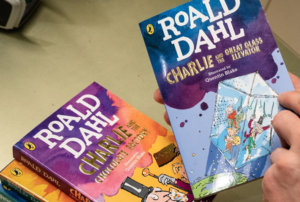Have you ever read a story that transported you to a different world, where you could smell the flowers and feel the breeze on your skin?
That’s the power of imagery and descriptive language in narrative essays. It’s the ability to paint a vivid picture in the reader’s mind, evoking emotions and immersing them in the story.
As a writer, your goal is to create a memorable experience for your readers, to make them feel like they’re a part of the story. And that’s where the use of imagery and descriptive language comes in.
By carefully choosing your words and phrases, you can create mental images that stay with your readers long after they’ve finished reading. In this article, we’ll explore the various techniques you can use to create vivid mental pictures, evoke emotions with your words, and strike a balance between descriptive language and the overall flow of your narrative.

Creating Vivid Mental Pictures
By employing descriptive language and vivid imagery, you can transport your readers into your narratives and immerse them in the story.
One way to achieve this is through the use of symbolism and representation. By using objects or actions as symbols, you can give your readers a deeper understanding of your characters and their motivations. For example, a character who frequently wears a red scarf could represent their fiery personality or passionate nature. This added layer of meaning can create a more immersive reading experience for your audience.
Another way to create vivid mental pictures in your narrative is through the use of sensory language and sensory details. By incorporating specific descriptions of sights, sounds, smells, tastes, and textures, you can make your readers feel as though they are experiencing the story firsthand.
For instance, describing the aroma of freshly baked bread or the sound of leaves crunching underfoot can transport your readers to a specific time and place in your story. These sensory details can also evoke emotions in your readers, making them more invested in your characters and their journey.
By using descriptive language and imagery, you can breathe life into your narrative and create a memorable reading experience for your audience.
Evoking Emotions with Words
Feel the power of your words as they flow from your fingertips, conjuring vivid emotions in your readers through the artful weaving of emotionally charged descriptions and sensuous imagery.
Your goal as a writer isn’t just to tell a story, but to make your readers feel something deep and profound. In order to achieve this, you must tap into the power of words to evoke the full range of human emotions.
One way to accomplish this is through sensory imagery and metaphors. Use rich descriptions that appeal to the senses, such as the salty tang of the ocean air or the velvety softness of a rose petal.
Metaphors can help you to convey complex emotions in a way that’s both accessible and powerful. For example, you might describe the feeling of heartbreak as a storm raging within your chest, or the joy of a first kiss as a burst of fireworks in the sky.
By using these techniques, you can create a vivid and emotionally resonant narrative that will leave a lasting impression on your readers.
Choosing the Right Words and Phrases
As you craft your writing, you’ll want to carefully select each word and phrase to create a vivid and captivating picture in the minds of your readers. One of the most important tools in your arsenal is word association.
By selecting the right words to describe your setting, characters, and actions, you can create an emotional connection with your readers and bring your narrative to life. For example, instead of saying that a character is ‘angry,’ you might choose to describe their emotion as ‘fuming’ or ‘seething.’ These descriptive words not only create a more vivid picture, but also evoke a stronger emotional response from your readers.
In addition to word association, finding inspiration for your descriptive language is also crucial.
One way to do this is to immerse yourself in the world you’re writing about. This might involve visiting a location, interviewing people with similar experiences, or even just observing your surroundings more closely. By tapping into your own emotions and experiences, you can create a more authentic and relatable story that resonates with your readers.
So, take the time to carefully choose your words and find inspiration for your descriptive language – your readers will thank you for it.
Using Metaphors and Similes
You can really bring your writing to life by comparing things to other things, painting a picture in your reader’s mind that makes them feel like they’re right there with you.
Metaphors and similes are great tools to use in descriptive writing. These figures of speech allow you to compare two things in a way that’s both imaginative and thought-provoking. By exploring different styles, you can find the perfect metaphor or simile to enhance your narrative essay.
One great way to find inspiration for metaphors and similes is to look to nature. The natural world is full of rich imagery that can be used to enhance your writing.
For example, you might compare a person’s eyes to the deep blue of the ocean, or the sound of a bird’s chirping to the gentle strumming of a guitar. These kinds of comparisons not only add depth to your writing but also make it more relatable and engaging for your readers.
So next time you’re struggling to find the right words, take a moment to observe the natural world around you and see what kind of imagery it inspires.
Balancing Descriptive Language with Overall Narrative Flow
Don’t let your descriptive language overpower the overall flow of your story; striking a balance between vivid imagery and smooth narrative is key to keeping your readers engaged.
Maintaining coherence is vital in narrative essays – you want your readers to follow along with your story without getting lost in a sea of descriptive language. While including descriptive phrases can add depth to your writing, it’s essential to avoid over-description.
Too much detail can bog down your story, causing readers to lose interest in the plot entirely. One way to balance descriptive language with narrative flow is to focus on the most critical moments in your story.
Think about the scenes that are most crucial to your plot and use descriptive language to highlight those moments. By doing so, you’ll create a vivid picture in your readers’ minds, without detracting from the overarching narrative.
Remember, your goal is to create a story that is not only visually engaging, but also easy to follow. Strike a balance between the two, and you’ll have a narrative that will keep your readers turning the pages.
Conclusion
Now that you’ve explored the use of imagery and descriptive language in narrative essays, it’s important to note that these techniques are not only helpful in engaging the reader, but they also make your writing more interesting and memorable.
By painting vivid mental pictures and evoking emotions with your words, you have the power to transport your reader into the world of your story.
However, it’s also important to strike a balance between descriptive language and the overall narrative flow. Too much description can bog down your story and detract from its impact.
As with any writing technique, it’s important to use your discretion and choose the right words and phrases that best serve your story. So, keep exploring and experimenting with these techniques, and don’t be afraid to take risks and challenge yourself as a writer.
Who knows, you may just discover a truth about your writing that you never knew existed.
As well as writing or reading a book you can start to see why gardening is becoming a popular and useful hobby. Link



